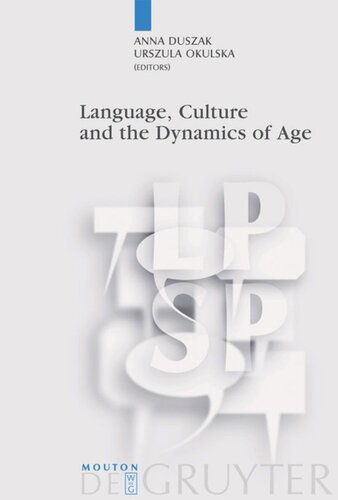

Most ebook files are in PDF format, so you can easily read them using various software such as Foxit Reader or directly on the Google Chrome browser.
Some ebook files are released by publishers in other formats such as .awz, .mobi, .epub, .fb2, etc. You may need to install specific software to read these formats on mobile/PC, such as Calibre.
Please read the tutorial at this link: https://ebookbell.com/faq
We offer FREE conversion to the popular formats you request; however, this may take some time. Therefore, right after payment, please email us, and we will try to provide the service as quickly as possible.
For some exceptional file formats or broken links (if any), please refrain from opening any disputes. Instead, email us first, and we will try to assist within a maximum of 6 hours.
EbookBell Team

4.8
24 reviewsThe book explores the role of age in communication under consideration of various age groups, genres, cultures and languages, and demonstrates the growing potential of age-related research for linguistic and social analyses that is founded on a more comprehensive and systematic basis than has been practiced so far. The volume establishes a point of contact with the work of Coupland, Giles and associates starting in the 1980s, and shows how it can be extended today to go beyond the early focus on detrimental aspects of aging. The contributors address social communication within and across age cohorts in all major age categories: the elderly, middle-aged, teenagers and children. The social skewing of the research presented explains the volume's focus on the discursive construction of social identities, with age implicated as a viable controller of how social action is strategically deployed for alignment and alienation, accommodation and divergence. The authors emphasize that a discourse construction of age and ageing is particularly important in the face of new challenges of globalization, increased human mobility and rising intergenerational conflicts.